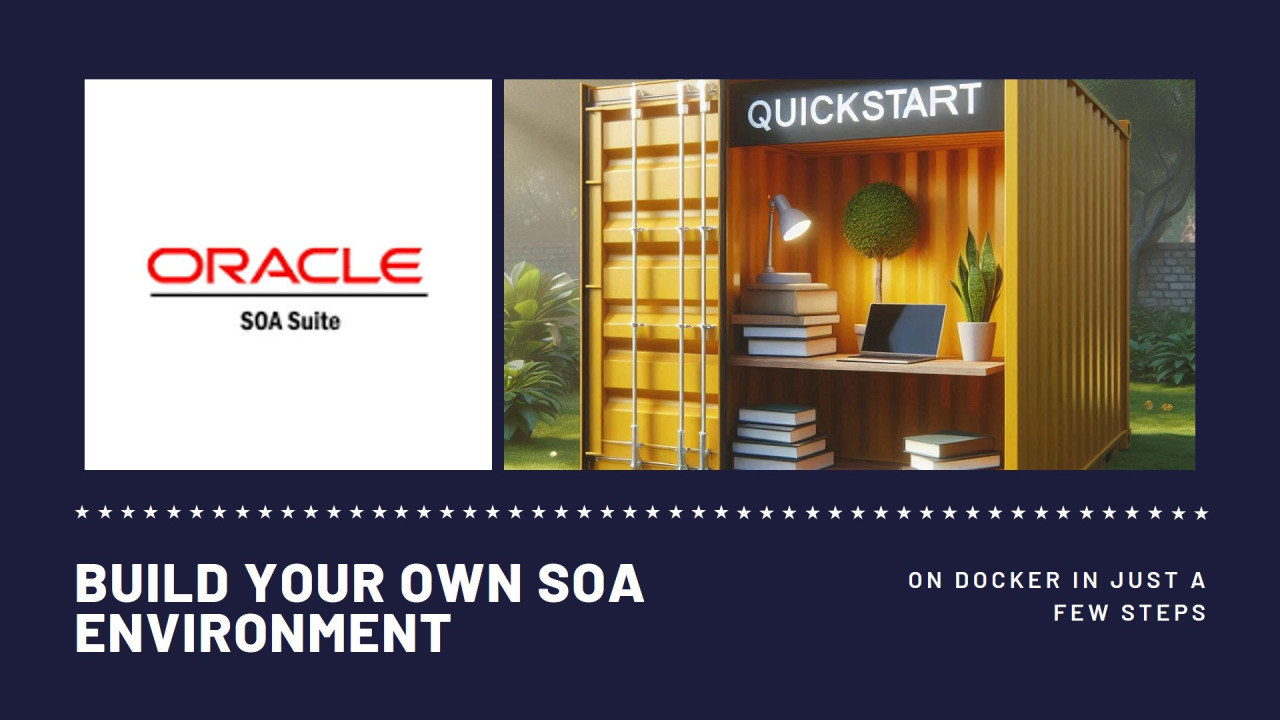

Operating - installing and maintaining - Oracle Fusion Middleware, especially Oracle SOA Suite 12.2.1.4 is quite some work. Not only does installation itself consist of a number of steps, but each quarterly critical patch update also requires applying a number of patches and - especially in simple, single server environments quite some downtime.
This blog post series will cover how to run Oracle Fusion Middleware - especially Oracle SOA Suite on docker. The first post covered the high-level steps of manual installation, Docker and Kubernetes options and has pointers to the relevant Oracle certification documentation. The second post then described how - using OCI and Oracle Linux - a host to run docker containers can be setup up within minutes. After that in the third post we covered provisioning an Oracle Database instance to hold the meta data of Oracle SOA Suite.
In the 4th episode we will cover how we can quickly create a metadata repository, configure and then start a SOA Suite environment in a headless mode.
In the next episode I'll demonstrate an alternative and show how the graphical RCU and config utility can be used within docker. In upcoming episodes we will cover patching and more advanced deployment options.
Creating the SOA Suite docker container
To configure the details of the "to be created" metadata repository create a adminserver.env file as follows:
CONNECTION_STRING=myxe1:1521/freepdb1
RCUPREFIX=SOA2
DB_PASSWORD=Promatis1
DB_SCHEMA_PASSWORD=Promatis1
ADMIN_PASSWORD=Promatis1
DOMAIN_NAME=soainfra
DOMAIN_TYPE=soa
ADMIN_HOST=soaadmin2
ADMIN_PORT=7001
PERSISTENCE_STORE=jdbc
Next, we create the SOA Suite docker container especially used for rcu:
docker volume create soa1_userproject
docker run -d --rm --name soaadmin2 --network soanet1 -v soa1_userprojects:/u01/oracle/user_projects -p 7001:7001 --env-file ./adminserver.env container-registry.oracle.com/middleware/soasuite_cpu:12.2.1.4-jdk8-ol7-240117
Monitor the creation of the metadata repository (through rcu) and of the domain:
docker tail -f soaadmin2
After the AdminServer is started we can start a managed server. For this we prepare a soa_server1_r2.env as follows:
MANAGED_SERVER=soa_server1
DOMAIN_NAME=soainfra
ADMIN_HOST=soaadmin2
ADMIN_PORT=7001
ADMIN_PASSWORD=Promatis1
MANAGED_SERVER_CONTAINER=true
MANAGEDSERVER_PORT=8001
Then we can start the soa_server1 as a separate (but connected) docker container:
docker run -d --rm --name soams1 --network soanet1 -v soa1_userprojects:/u01/oracle/user_projects -p 8001:8001 --env-file ./soa_server1.env container-registry.oracle.com/middleware/soasuite_cpu:12.2.1.4-jdk8-ol7-240117 "/u01/oracle/container-scripts/startMS.sh"
You should now be able to access the SOA Suite environment through a browser.
Some more scenarios are described over there: https://github.com/oracle/docker-images/tree/main/OracleSOASuite/dockerfiles/12.2.1.4.
Summary
By using scripts for automating rcu and domain creation it is possible to create the metadata repository as well as configure the domain for Oracle SOA Suite quickly. In an upcoming blog post we'll cover how a domain can be configured in a fully flexible way, how the docker image can get patched as well as which other options are available to create a SOA Suite environment in OCI.

